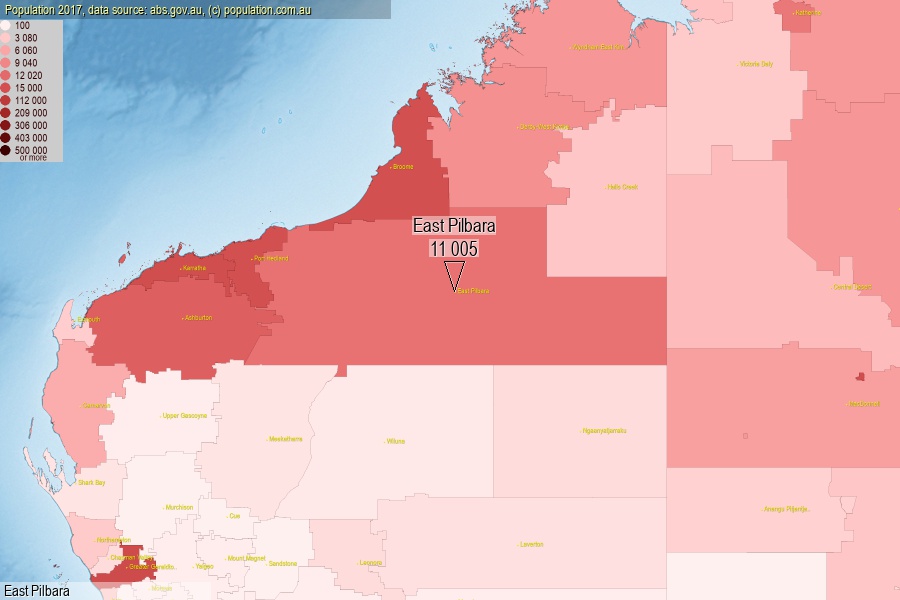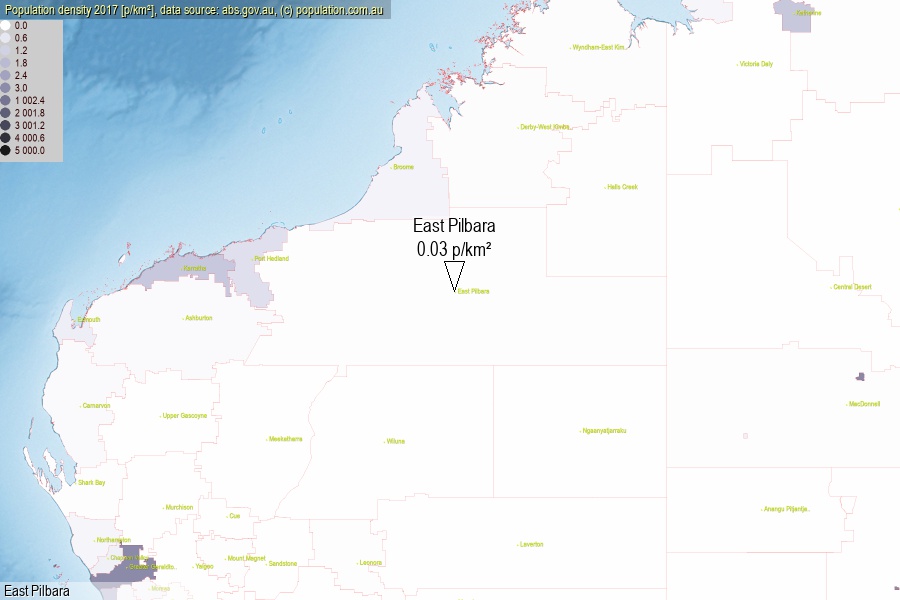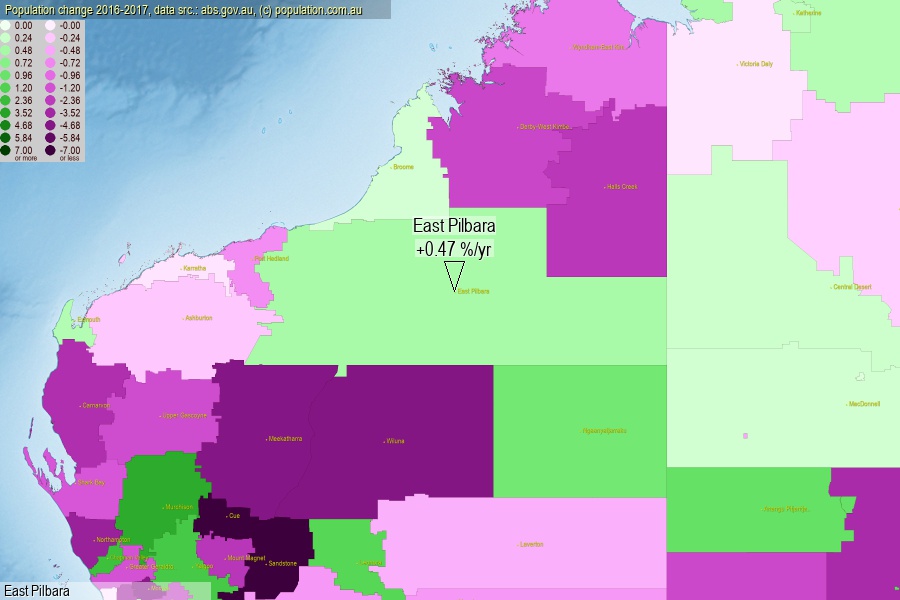 population.com.au
population.com.auLast official estimated population of East Pilbara Shire (as Local Government Area) was 11 005 people (on 2017-06-30)[2]. This was 0.04% of total Australian population and 0.425% of WA population. Area of East Pilbara is 372 307.50 km², in this year population density was 0.03 p/km² . If population growth rate would be same as in period 2016-2017 (+0.47%/yr), East Pilbara population in 2025 would be 11 430. [0]



Click to enlarge. East Pilbara is located in the center of the images.
Population [people], population density [p./km²] and population change [%/year] [2]
[1996-2001] -3.51 %/Y
[2001-2002] +4.58 %/Y
[2002-2003] +4.43 %/Y
[2003-2004] +6.35 %/Y
[2004-2005] +6.63 %/Y
[2005-2006] +9.56 %/Y
[2006-2007] +11.00 %/Y
[2007-2008] +13.41 %/Y
[2008-2009] +11.42 %/Y
[2009-2010] +7.15 %/Y
[2010-2011] +6.38 %/Y
[2011-2012] +2.14 %/Y
[2012-2013] +0.41 %/Y
[2013-2014] -3.35 %/Y
[2014-2015] -5.10 %/Y
[2015-2016] -5.00 %/Y
[2016-2017] +0.47 %/Y
[0] Calculated with linear interpolation from officially estimated population
[1] Read more about LGA and Australian Statistical Geography Standard (ASGS) on abs.gov.au
[2] Population data from Australian Bureau of Statistics (Population and density: 2017; change: 2016-2017)
[3] Digital Boundaries: Australian Statistical Geography Standard (ASGS) 2016.